All 11 Zack Snyder Films Ranked, from ‘Dawn of the Dead’ to ‘Rebel Moon — Part Two’
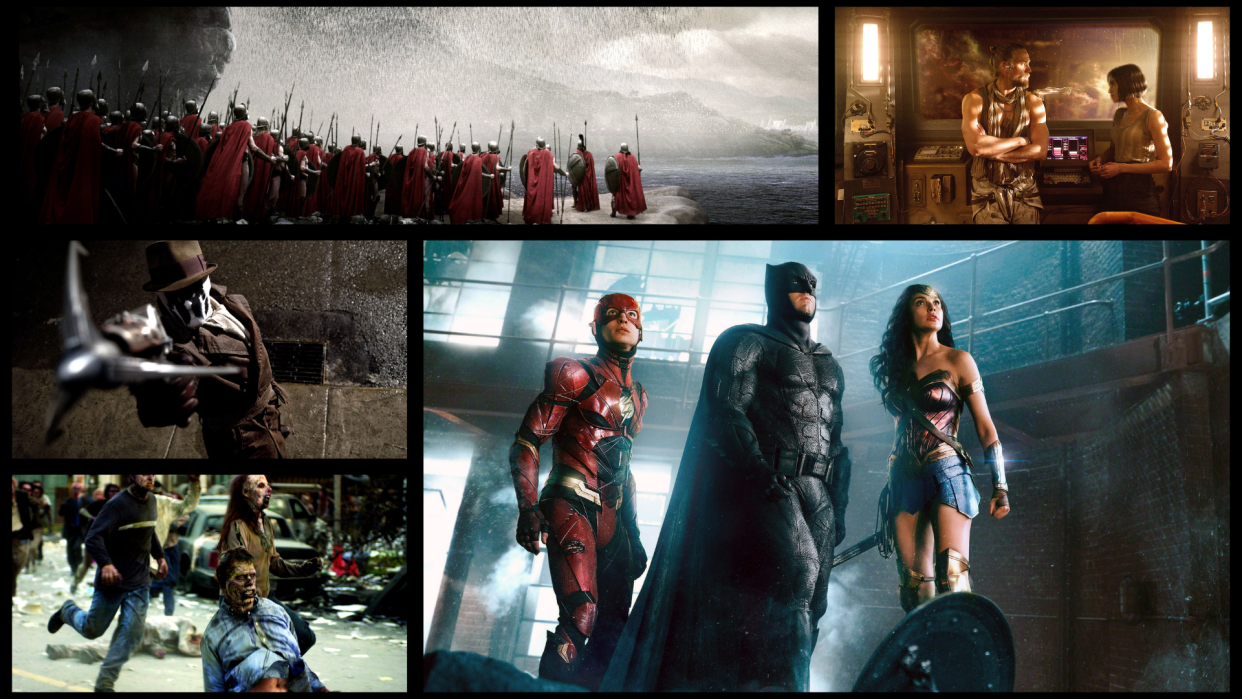
[Editor’s Note: this list was originally published in November 2017. It has since been updated with Snyder’s further work to coincide with the release of “Rebel Moon — Part Two.”]
Zack Snyder is possibly the most polarizing mainstream filmmaker of the 21st century. His name alone is enough to launch a thousand angry tweets, and the most passionate writing about his work is exclusively found in the comment sections of websites or as social media replies. Snyder’s critics really seem to hate him, and Snyder’s fans really seem to hate his critics. At this point, a Marvel / DC movie crossover might be a lot more plausible than finding any sort of common ground between those two camps. Is Snyder a master or a hack? A misunderstood myth-maker, or a meathead with a movie camera?
More from IndieWire
One thing we can say for sure is that no contemporary auteur has more awesomely investigated what it means to be a hero in a fallen world. The Pasadena native has leveraged a remarkable music video portfolio into a big-screen career fueled by obsessions with power and its corruption.
From the lowly security guards in his “Dawn of the Dead” remake to the almighty Superman in “Batman v Superman: Dawn of Justice,” his films investigate our relationship with authority, the most extreme of these baroque pop spectacles even exploring man’s desire to destroy God. On the other hand, Snyder hasn’t proven himself to be entirely unsympathetic toward God — he knows what it feels like to create worlds from his whims, and he knows what it feels like for people to curse him for it.
After a long stretch of his career defined by the now-dead DC Extended Universe, Snyder’s place in Hollywood feels much less central, and maybe a lot less controversial, than it did back in 2013 when he was handed the keys to Superman’s Fortress of Solitude. He’s instead brought his muse to Netflix, where he has a first-look deal and free rein to apply his unique perspective toward genres like zombie horror, the space opera, and…a King Arthur movie? For some, these movies are must sees, for others instant skips. But whatever your opinions on Snyder, it’s hard to deny there’s something endearing about his commitment to his polarizing aesthetics — the slo-mo, the near parodic grimdark masculinity — that makes him so divisive. Although he’s not exactly a master filmmaker on the par of Scorsese, looking at Snyder’s canon reveals an artist who is truly only interested in making the movies he wants to make — regardless of what audiences might think of him.
With “The Scargiver,” Part Two of Snyder’s “Rebel Moon” space opera, now on Netflix, IndieWire has decided to refresh its ranking of Snyder’s films. This list initially included the original 2017 cut of “Justice League,” which was substantially reshot by replacement director Joss Whedon; it has since been subbed out for the 2021 “Snyder Cut.” Read on for all 11 Zack Snyder films, ranked from best to worst.
11. “Rebel Moon – Part One: A Child of Fire” (2023)
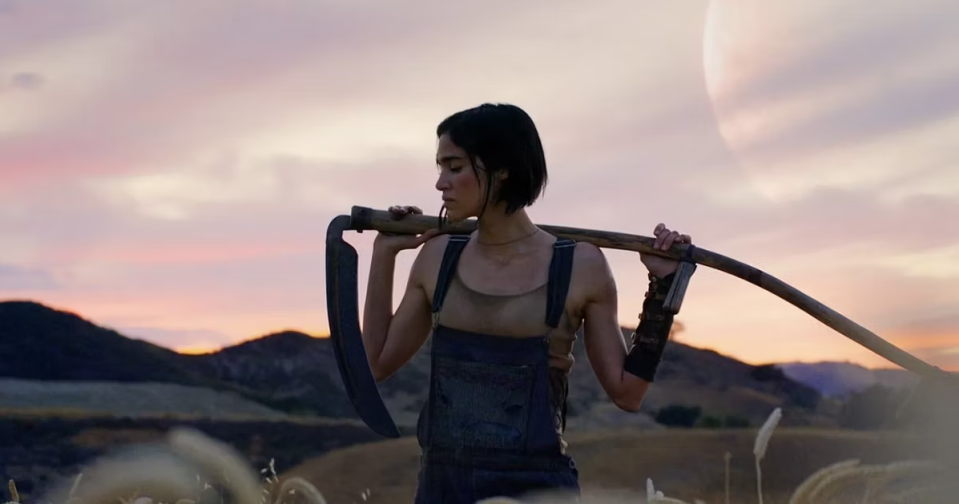
A truly baffling disaster, “A Child of Fire” received a response unusual to Snyder’s career: apathy. Not even his fans seemed to care for part one of the director’s reskinned “Star Wars” spinoff, which came and went so quickly you’d think Netflix deleted it from their servers after 24 hours. Maybe the reason is nobody was able to make it through more than 10 minutes of the agonizing slog, a poorly crafted “Seven Samurai in Space” riff that steals ingredients from George Lucas’ films and other entries in the sci-fi canon (“Avatar,” “Blade Runner”) and cooks them into the world’s most unappetizing stew. The result is utterly clogged in torturous exposition and wafer-thin characters played by actors who all deserve better. Incoherent and lifeless, “Rebel Moon” is the only entry in Snyder’s canon that isn’t even interesting to think about; if his other films are fun to hate, “Rebel Moon” doesn’t deserve an ounce of your energy whatsoever. —WC
10. “Rebel Moon — Part Two: The Scargiver” (2024)
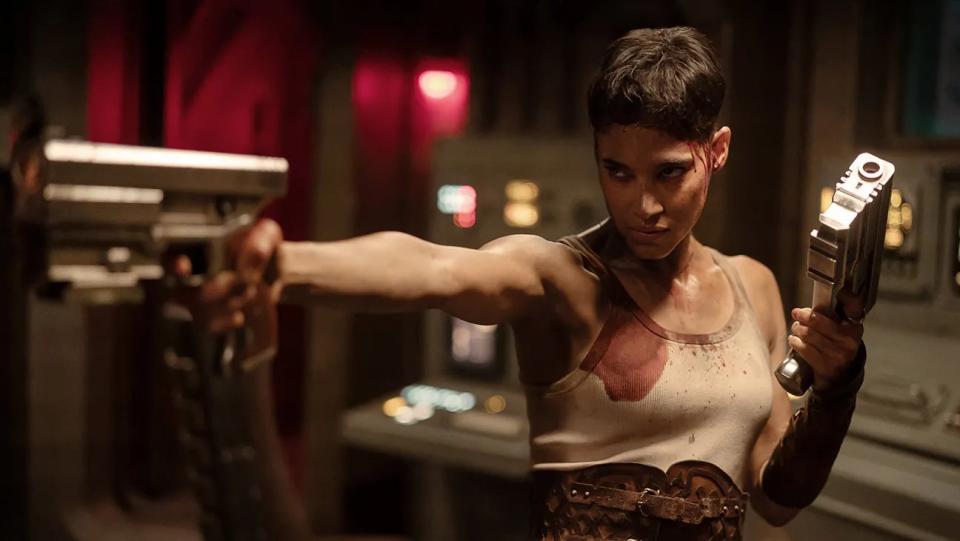
“Rebel Moon — Part Two: The Scargiver” has been dead since last December, when the irredeemable first chapter of Zack Snyder’s hyper-derivative space opera was released “in theaters” and on Netflix to deafening silence. As I concluded my review at the time: “It’s hard to be even morbidly curious, let alone excited, about any future iterations or installments of a franchise so determined to remix a million things you’ve seen before into one thing you’ll wish you’d never seen at all.”
And so, much as I might have hoped that the second and more concentrated half of Snyder’s sci-fi “Seven Samurai” would somehow atone for the sins of its previous chapter, I wasn’t exactly shocked to discover that it lacks any trace of a pulse from the moment it starts. Five months in the morgue can have that effect. Be that as it may, the sheer lifelessness of this Sora-like spectacle still manages to defy even the lowest of expectations.
If “The Scargiver” is shorter, more straightforward, and generally less of a headache than “Part One: A Child of Fire,” its failures are twice as baffling. This was supposed to be the easy part. —DE
Read IndieWire’s Complete Review of “Rebel Moon — Part Two: The Scargiver.”
9. “300” (2006)
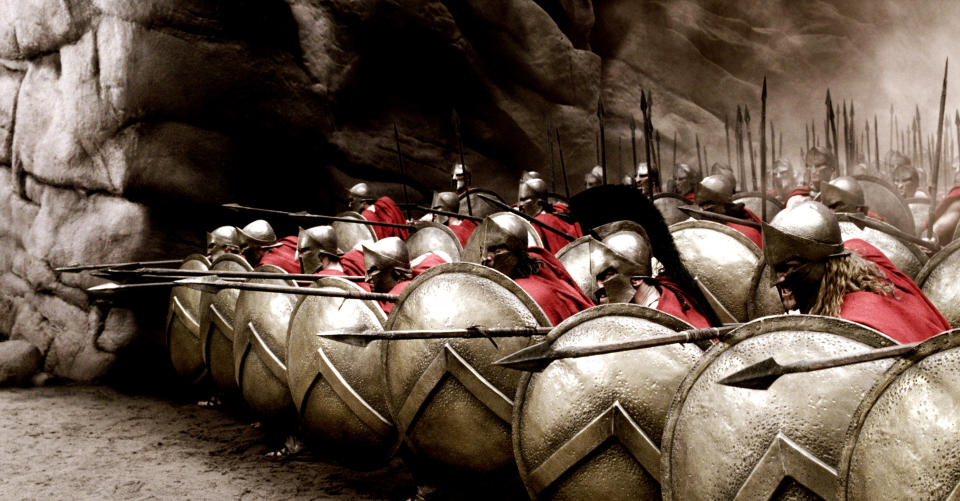
What hell hath “Sin City” wrought?
The year was 2005, and Zack Snyder was fresh off the success of his invigorating “Dawn of the Dead.” Inspired by how fluidly Robert Rodriguez had brought Frank Miller’s “Sin City” to the big screen, and eager to put his own hyper-muscular flex on the technique, our hero decided to pursue a project that would somehow be even less original than the remake that had launched his directing career. The result is a film that’s somehow both groundbreaking and derivative in equal measure, a lifeless, horridly anti-cinematic spectacle that established Snyder’s visionary gift for showing us what comic books might look like if you didn’t have to turn the pages yourself.
Adapted from Miller’s graphic novel series of the same name (though adapted feels like a generous description for a film that was essentially just transposed off the page), “300” found Snyder tapping into his background as a painter to create a blockbuster that feels like it was entirely cut together from its own concept art. Whereas “Sin City” was split across several different stories that managed to skate by on the beauty of their monochrome noir atmosphere, “300” chronicles a suicide mission in such painful slow-motion that we might as well be watching it in real-time.
Animating Miller’s panels into blue-screened tableaux may have made for some incredible trailers, but the approach can’t sustain an entire feature. Even if the jaundiced artificial environments don’t make you want to look away, the constant speed-ramping makes the whole thing feel as though it were shot underwater, the drama inherent to the Battle of Thermopylae just washing away in an interminable swell of fight scenes so boring that the narrator eventually just starts talking over them. Really, “300” was doomed from the moment that Snyder first confused strength for substance, as the movie doesn’t give you much to hold onto aside from the ridges of Gerard Butler’s genuinely insane eight-pack. We’re supposed to see this as a rousing story of heroism expressed through self-sacrifice, but it resolves as a senseless tragedy — 2,400 of the most perfectly sculpted abs in history were lost on that battlefield, and for what? —DE
8. “Legends of the Guardians: The Owls of Ga’Hoole” (2010)
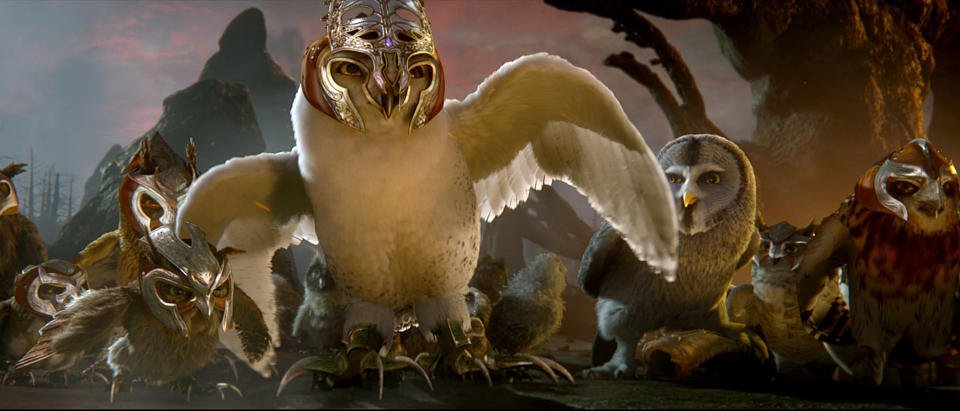
As much fun as it would be to argue that the kids movie where Helen Mirren voices a Nazi owl is secretly Zack Snyder’s masterpiece, that wouldn’t be very — what’s the word — true. Best remembered as the punchline of Matt Damon’s best “30 Rock” joke, “Legend of the Guardians: The Owls of Ga’Hoole” is not one of the better animated films of recent years. In fact, it’s not even one of the better semi-forgotten animated films of recent years (I’ll take “Meet the Robinsons” over this any day of the week).
Cramming the first three books of Kathryn Lasky’s winged adventure series into a lifeless 88 minutes, LGOGH is an anguished reminder of why “The Fellowship of the Ring” opens wth 10 minutes of table-setting. The “epic” story of some visually indistinguishable young owls who escape an Owl Concentration Camp in order to find the Owl Avengers so they can defeat Owl Hitler and dance to a song by Owl City, the film never gives viewers much of a reason to care about its parliament or their plight, nor even a real opportunity to understand it.
On the other hand, it’s easy enough to understand why Snyder wanted to make this thing. It wasn’t really even that much of a change of pace for him, considering that “Dawn of the Dead” is the only one of his movies that feels right to think of as “live-action.” Maybe “Watchmen” if you’re feeling nice. The only difference between “Legend of the Guardians” and “300” is that the characters here are as fake as their environments; like Wes Anderson dabbling in stop-motion, perhaps Snyder was just eager to play in a world that he could control completely. Or maybe he just couldn’t resist the idea of speed-ramping a fight between two angry birds. Who knows, the world is full of mysteries. But one thing is crystal clear: “Through our gizzards, the voices of the ages whisper to us and tell us what’s right.” —DE
7. “Man of Steel” (2013)
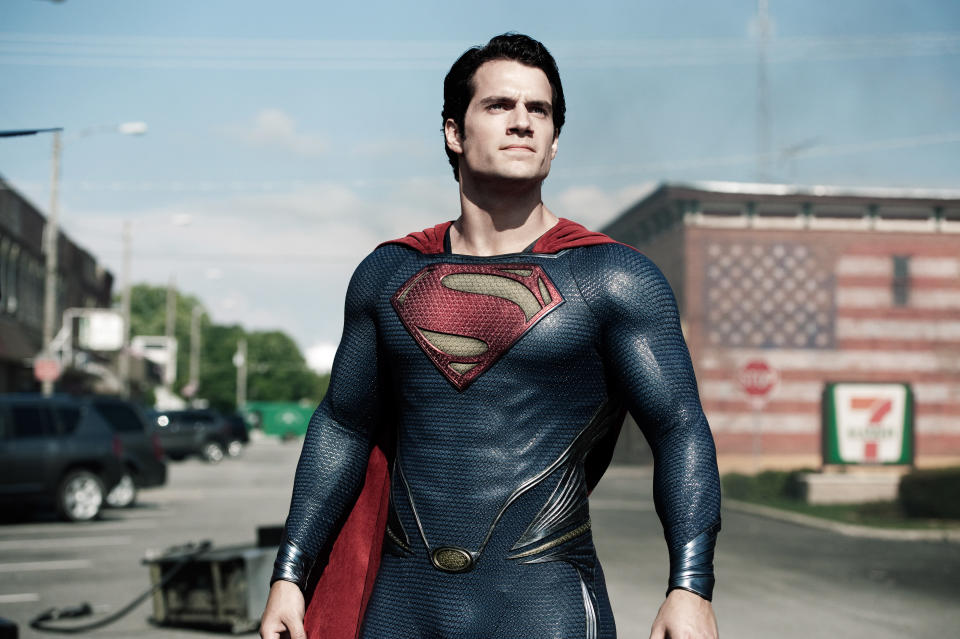
“Man of Steel” was inevitably decried for being too dark, but in the wake of “Watchmen,” it would have seemed disingenuous for Snyder to invest in an innocent Superman. “Man of Steel” is a pretty dreadful movie, the collateral damage of which extended far beyond the millions of lives lost during its climactic battle, but the truth of the matter is that Snyder’s brooding approach to the character was probably the right one for the time. It still is. We live in a dark age, and Kal-El unfortunately has to reflect that — if he’s to be thought of as a Christ figure, that burden is his cross to bear. Superman is a character forged by the moral crucible of life on Earth, and life on Earth isn’t getting any easier.
Snyder knows Superman far better than this critic (and most critics) ever will, but the filmmaker made one fatal miscalculation that threatened to undo the DCEU before it even got off the ground. In the comic books, it makes sense for Kal-El to be a genuine protagonist. On the screen, however, he works better as a lens than a subject. Snyder wanted to complicate Superman, but Superman isn’t necessarily a complicated guy. It’s the humans who are complicated, and Superman is compelling in how he responds to that.
His steady goodness is the most alien part about him, and the drama of the character can be found in his struggle to save us without scaring us away, to fight for us only so far as we’re willing to fight for ourselves. When you’re only working with 143 of the longest minutes ever recorded, it’s a lot more interesting to focus on what the world thinks of Superman than it is to focus on what Superman thinks of the world. He should be as much of a symbol as the thing stitched across his chest. Maybe people wouldn’t have been put off by Metropolis’ death toll if it felt like the film was critical of Superman’s existence (more on this later).
But no, Snyder is hung up on the Hero’s Journey, so we have to follow Kal-El’s every step through the labyrinth and “come to the center of his own existence.” We have to deal with the goofy opening sequence where Russell Crowe rides a spacefly, we have to deal with unmotivated flashbacks of Clark as a kid, and we have to deal with a little too much Pa Kent. All of it is chopped up for maximum boredom and seasoned with a little half-baked Malick flavor for extra gravitas — and it comes at the expense of a single interesting female character (we see Martha and Lois from Clark’s POV, and he’s too enamored with both for either to come alive). It’s a shame, too, because Snyder’s eye for casting has never been sharper. Michael Shannon is a great Zod in a franchise that would soon move away from human-looking bad guys, and Henry Cavill has the kind of jaw that can’t be faked with CG. If only Snyder could divine the difference between what’s cool and what’s compelling, maybe all the action could have saved this. It only makes things worse. —DE
6. “Batman v Superman: Dawn of Justice” (2016)
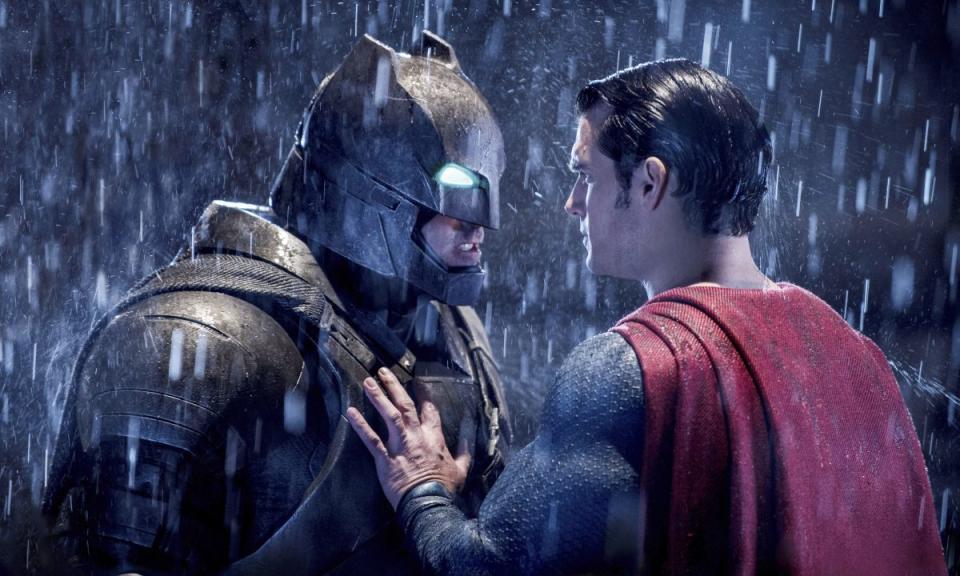
So this one didn’t go over so well. Martha, and all that. It wasn’t Snyder’s finest moment, but it also wasn’t that part early in “300” when the Persian messenger hurls himself into the bottomless pit of death just because Snyder thought it would look cool, so let’s keep everything in perspective. “Dawn of Justice” isn’t a good movie, but that doesn’t mean it didn’t get a bad rap. There are things about this film that work, and work well — if it were Superman’s first impression of cinema, he might deem the art form worth saving.
For one thing, the prologue is one of the best things Snyder has ever shot; it’s as urgent and red-blooded as any set piece the superhero genre has ever produced. What’s more, it offers the best possible rebuttal to the people who were so ticked off by the callousness of the destruction in “Man of Steel,” as Snyder simply returns to the scene of the carnage and shows it to us from ground-level. We don’t need to see a guy praying to Jesus as a building caves in on him to understand that lives are at stake. If there’s one thing Snyder has never had trouble with, it’s opening a film.
For another thing, “Dawn of Justice” introduces Wonder Woman, savior of the DCEU. It also introduces Hans Zimmer’s Wonder Woman guitar lick, which has come in pretty clutch ever since.
…And that’s about it. It should work. It’s full of Snyder’s favorite stuff. Not only does the movie literally burnish superheroes into legend (Lex Luthor tells Holly Hunter that the myths we know all stem from metahumans), it also tasks both Lex and Bruce Wayne with trying to find a deterrent against Superman’s power. In short, “Dawn of Justice” allows Snyder to craft a version of “Watchmen” in his own image. Unfortunately, that image includes Granny’s peach tea, a lot of straining to level the playing field between its two eponymous heroes, and the first of the DCEU’s ruinously stupid CG villains. It’s as though Snyder finally set up the story he wanted to tell, and then couldn’t get out of his own way. —DE
5. “Sucker Punch” (2011)
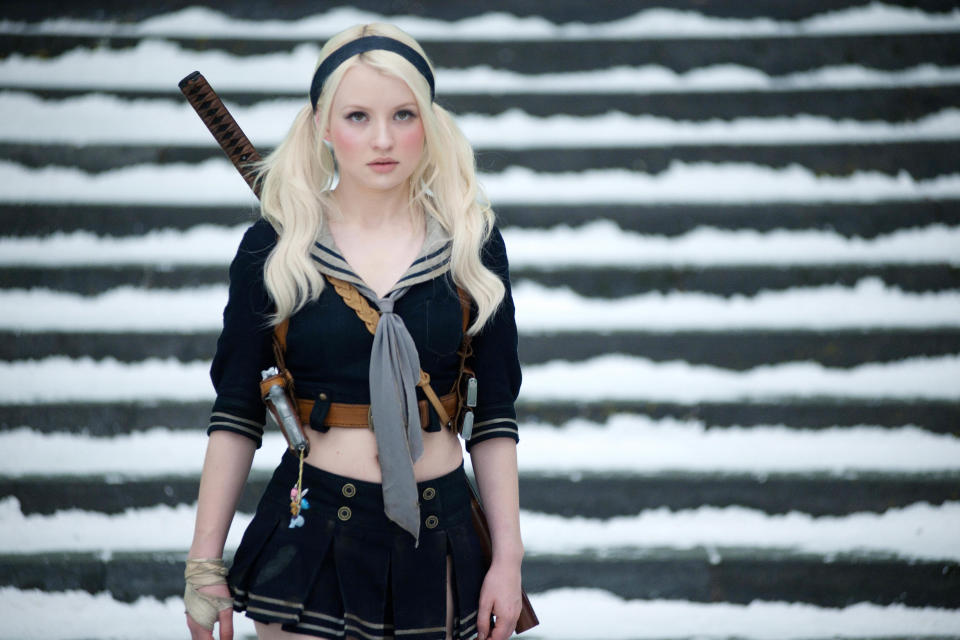
Snyder’s one true blank check movie, “Sucker Punch” is clogged with every contradictory idea that’s ever popped into its director’s brain. More than just “‘Alice in Wonderland’ with machine guns,” it’s an unabashedly fetishistic pop spectacle that distills several generations of teenage boy awesomeness into a film so inert and detached that it makes you wonder how awesome those things really were in the first place. And that’s just one counterintuitive aspect of a three-tiered fantasy that is always trying to have its cake and eat it, too (often in speed-ramped bites against a green-screened kitchen).
This is a movie that objectifies women in order to critique nerd culture’s objectification of women, a movie that empowers women by locking them inside a mental institution. The most fun thing about watching it is is trying to figure out how much of it is deliberate, and how much of it is just Snyder bumping around in all of his blind spots.
Either way, the film’s unbridled ambition makes it one of his best films by default, and arguably his most intriguing. It’s also a showcase for his flaws, presenting them with the clarity of a diorama. “Sucker Punch” is COOL in all caps, serving up a style that only makes sense in the context of its own emptiness. The set pieces hinge on geek touchstones (the steampunk WWI soldiers, the samurai in the snow, etc.) because Emily Browning’s heroine is reaching through time and using these shared images as a refuge from her grim reality, but Snyder’s dream-within-a-dream plotting removes any semblance of real stakes.
But the more fundamental problem for Snyder is that he doesn’t know how to stage real action in digital environments. At all. Yeah, after “300” that was supposed to be the guy’s strength, but people got it wrong. Snyder’s movies slow to a halt as soon as the fight scenes start because they have no weight to them. He goes nuts with the CG, amplifying every movement with the overwrought enthusiasm of a teenage boy whose only concept of sex comes from watching lots of bad pornography. The combat never speaks for itself, it’s always in quotation marks and underlined to the point where it becomes illegible. All of his fight scenes feel like you’re watching a 90-pound schoolgirl jumping over a 25-foot samurai who has a chain gun for some reason — all of them feel like you’re watching the Comic Con version of a cheap cabaret. At least this one has a baby-faced Oscar Isaac, Emily Browning singing, and Björk. The DCEU could desperately use any of those things. —DE
4. “Watchmen” (2009)
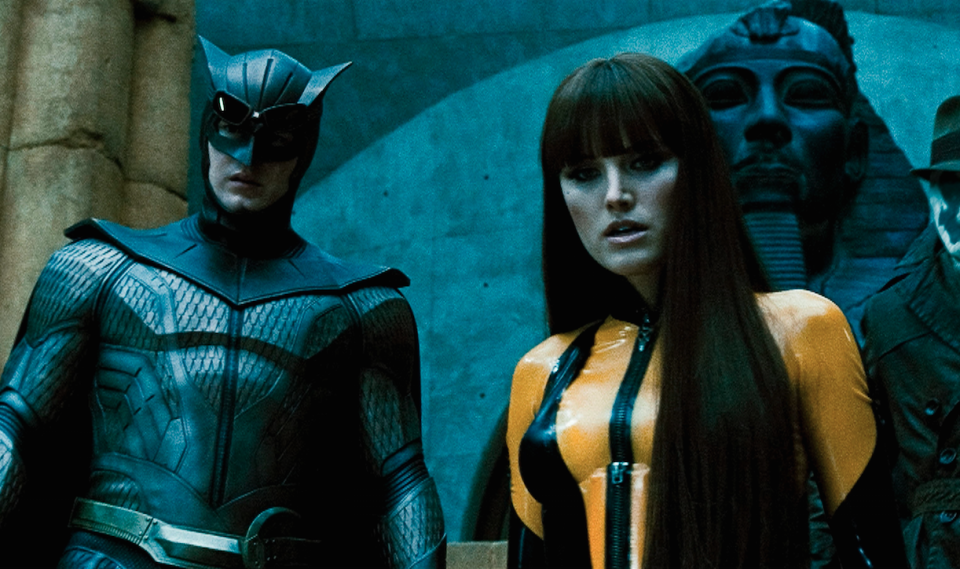
“Watchmen” is the movie that Zack Snyder was born to make. That doesn’t necessarily mean that it’s good, only that Alan Moore and Dave Gibbon’s seminal graphic novel is the perfect vessel for all of the things that make Snyder tick, and that no other property in the superhero genre could ever provide him a better conduit through which to explore his pet obsessions.
Strictly as an adaptation, Snyder’s “Watchmen” is flawed in a number of Snyder’s signature ways. The movie is awkwardly stuck between slavish fidelity and stylized fetishism, to the point where it feels like there’s a disconnect between its body and soul. While impeccably cast (Jackie Earle Hayley is a flawless Rorschach) and punctuated by at least two astonishingly good sequences that underscore Snyder’s gift for synthesizing a certain mood through sound and image, the film is so disposable that HBO’s sequel series to the graphic novel decidedly cleared it. The characters are never able to escape their legends, and even the scenes that take place in the present are entombed in amber. But it’s still “Watchmen.”
Which is why, as an act of ambition, this thing is a marvel. Snyder’s greatest success for “Watchmen” was simply convincing a studio to make it in the first place. The filmmaking process begins a long time before cameras roll on the first day of shooting, and the truth is that Snyder is even better in a boardroom than he is on the set. Snyder’s ability to convince Warner Bros to plunk down for all 160 minutes of it back in 2009 is still mighty impressive (even if the squid monster got lost in the shuffle). It also helped that Snyder found the perfect moment for this movie, as the dawn of superhero cinema had left multiplex audiences as susceptible to this kind of subversion as comic book readers had been in the ’80s. —DE
3. “Army of the Dead” (2021)
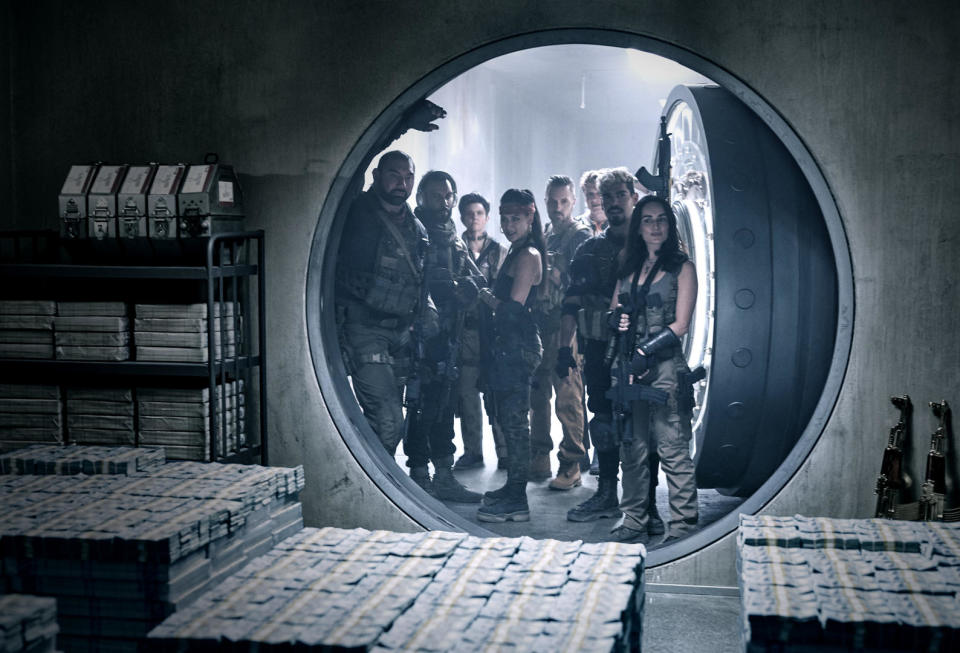
After years where the seemingly pretty nice Snyder made films that somehow doubled as cultural lightning rods, “Army of the Dead” landed on Netflix in 2021 as a breath of fresh air. Here is a Snyder movie that can genuinely be described as “modest,” a big dumb zombie movie that harks back to his career beginnings directing “Dawn of the Dead,” with little pomp and circumstance beyond having a good time. And “Army of the Dead,” unusually, does offer a decently solid good time, thanks to a solid cast led by Dave Bautista (the Daniel Day-Lewis of WWE stars) and a solidly humorous tone to the story of a group of mercenaries planning a heist during a zombie apocalypse. Now, the jokes in Snyder’s script (co-written with Shay Hatten and Joby Harold) aren’t exactly amazing, and sometimes prove genuinely exasperating, but at least they offer a refreshingly different kind of tedium than the plodding dourness of many of Snyder’s films. And, while “Army of the Dead” is more of a trifle than anything substantial, it still manages to barely squeak its way to the realm of “fun” thanks to the commitment from everyone in front of the camera. Also, it’s notably the only movie to win the Oscars Fan Favorite contest, which doesn’t necessarily count for anything, but at least ensures it a dubious place in the history books. —WC
2. “Zack Snyder’s Justice League” (2021)
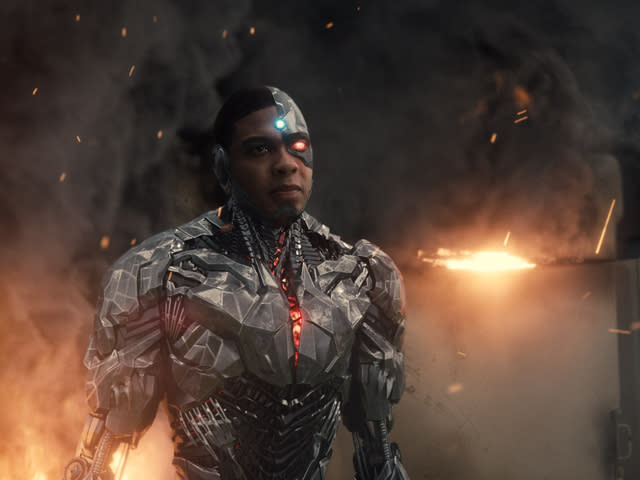
The 2021 Snyder Cut might not be great cinema, but there is something genuinely moving about the fact that it exists. Snyder, after being forced to abandon “Justice League” due to the tragic loss of his teenage daughter, returns to the DCEU he helped define to make the movie he wanted to make, with absolutely no compromises or restrictions. The path to get to that point was fraught with behind-the-scenes drama and online toxicity from some of the director’s more overzealous fans, but it’s hard to begrudge a movie made as such an obvious labor of love from the filmmaker behind it. And “Zack Snyder’s Justice League,” for all of its faults, is both a massive improvement from the botched original theatrical “Justice League” and the indisputable magnum opus of his career, a perfect distillation of his style. Everything about the film — its luxurious four-hour runtime, its operatic scale, the loving way Snyder shoots his actors like gods come to life — feels like a synthesis of the director’s priorities and worldview, making for one of the only superhero films of this century to have true vision behind it. “Zack Snyder’s Justice League” is a mixed bag that contains some of the best and worst filmmaking of the director’s career, but its sheer passion is enough to make you a bit teary-eyed as the credits role. —WC
1. “Dawn of the Dead” (2004)
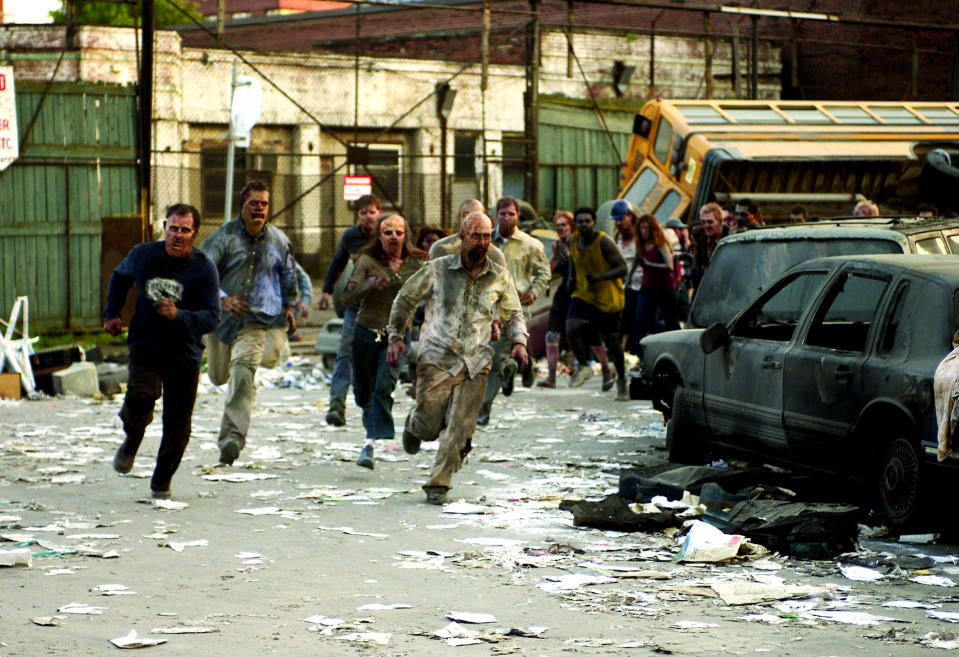
There’s something unkind about crowning a filmmaker’s first movie as his best, but you’re encouraged to think of this less as an insult to the rest of Snyder’s work than it is a celebration of an under-appreciated modern classic. “Dawn of the Dead” is the perfect showcase for Snyder’s talent: It makes use of everything he does well, and ditches everything he doesn’t (there were so many bad habits he had yet to acquire). The director’s flair for darkness has never again served him so well, if only because this remains the only one of his films where the decision to go bigger, scarier, and more fucked up was always the right one for the story. The baby delivery scene? Yeah, it’s even more disturbing than you remember.
Starting — as is his wont — with an iconic text that’s inextricable from our culture, Snyder took George Romero’s zombie classic, borrowed a little speed from Danny Boyle, and brought “Dawn of the Dead” into the 21st century at a full sprint. The opening sequence alone was probably enough to convince Hollywood that this guy had the goods, as it turns the world upside down in just a few minutes. Those incredible bird’s-eye shots of cards screaming across intersections reinforce the disturbed idyll of suburbia while also expressing the scale of the terror in a way that Romero never could. All of this before the first of Snyder’s signature title sequences, this one using Johnny Cash to orient this madness in a pop cultural place, to present a body of work where everything is slightly unreal and in reference to itself.
While the original film was a merciless attack on capitalism, Snyder’s remake was made in response to 9/11, and the xenophobia that followed in its wake. The movie may have been shot in Canada, but the sheer Americanness of its mall setting keeps its context in check; there’s still something uncomfortably real about one of those evil security guards moaning that “If we start letting people in here, then we’re gonna let the wrong ones in, and then we’re gonna die.” At the start of a career that’s been obsessed with killing gods, Snyder made a heart-stopping film about a world in which God is already dead, and people are left to consolidate power or be eaten alive by the vacuum that divinity has left behind. Watching Jake Weber evolve from a Best Buy TV salesman into a stoic leader is the most fascinating hero’s journey that Snyder has ever chronicled. Ving Rhames and Mekhi Phifer are stellar, and of course “Dawn of the Dead” is Snyder’s best film by default because it’s the only one he made that stars Sarah Polley. —DE
Best of IndieWire
The 28 Best True Crime Shows Streaming Now, from 'Under the Bridge' to 'The Vow'
The 10 Best Doppelganger Films, from 'Dead Ringers' to 'Vertigo'
The Best Cannibal Films of All Time: 'Silence of the Lambs,' 'Raw,' and More
Sign up for Indiewire's Newsletter. For the latest news, follow us on Facebook, Twitter, and Instagram.

 Yahoo News
Yahoo News 
